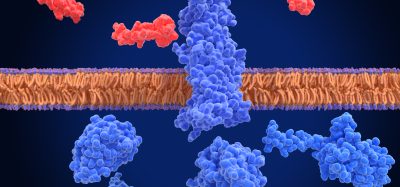Scientists uncover mechanisms of potential COVID-19 drug targets
Posted: 28 September 2021 | Anna Begley (Drug Target Review) | No comments yet
Researchers have used CRISPR and cryogenic electron microscopy to unravel the workings of two receptors involved in diseases such as cancer and COVID-19.


Researchers from McGill University, Canada, and IIT Kanpur, India, have discovered the inner workings of cell receptors that are involved in cancer progression and inflammatory diseases, thereby unveiling the mechanisms of potential drug targets for various diseases such as cancer, rheumatoid arthritis and COVID-19.
“The complement system is an integral part of our body’s defence mechanism against pathogenic attacks including viruses. When bacteria or viruses enter our body, the complement system is activated including two different membrane receptors called C5aR1 and C5aR2,” explained Professor Arun Shukla who led the study. “While activation of the complement system is essential to combat harmful pathogens, excessive and sustained activation leads to inflammation, even life-threatening conditions like the ones responsible for severe complications in COVID-19.”
Find out how a new screening method identified a COVID-19 protein inhibitor – CLICK HERE
Using cutting-edge technologies such as CRISPR and cryogenic electron microscopy, the researchers investigated the inner workings of C5aR2, providing an additional opportunity for therapeutic targeting for COVID-19. “To treat COVID-19, some scientists are already trying to block the activation of the
Our study opens up the possibility of targeting C5aR2 by designing new drug molecules that can bind to this receptor and block its activation and inflammation response”
C5aR1 receptor and clinical trials are already underway for Avdoralimab in patients with COVID-19 induced sever pneumonia,” explained Professor Stéphane Laporte in the Faculty of Medicine and Health Sciences. “Our study opens up the possibility of targeting C5aR2 by designing new drug molecules that can bind to this receptor and block its activation and inflammation response.”
We are very excited to decipher the finer details of these receptors using cutting-edge technologies. Such information should enhance our fundamental knowledge about cellular signalling and allow us to translate our findings into novel drug discovery,” concluded Shukla.
The findings were published Molecular Cell.
Related topics
CRISPR, Drug Discovery, Drug Targets, Microscopy, Molecular Targets, Oncology, Small Molecules, Target Molecule, Target Validation, Targets, Technology
Related organisations
IIT Kanpur, McGill University
Related people
Arun Shukla, Stéphane Laporte








